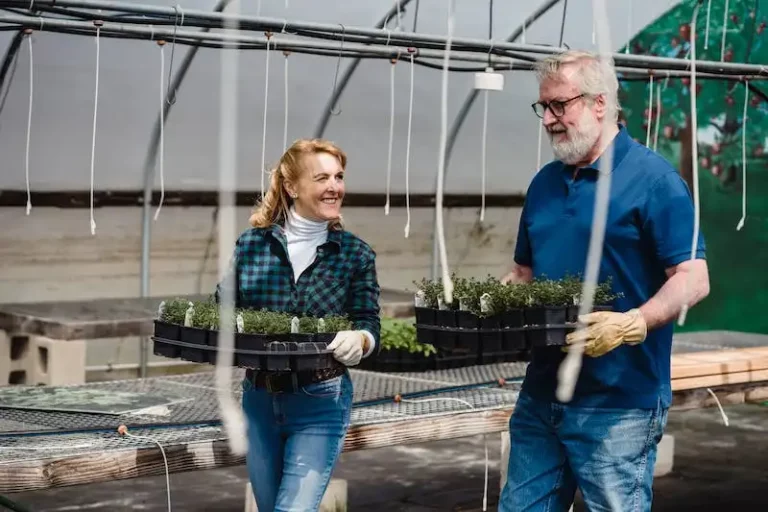Welcome to the world of Dracaena Sp! This genus includes a wide variety of trees and shrubs that are popular for their stunning foliage and easy care. Dracaena Sp, commonly known as dracaeana or dragon trees, are versatile plants that can tolerate a wide range of growing conditions, making them perfect for both interior and exterior landscaping.
One of the reasons why Dracaena Sp is beloved by plant enthusiasts is because they are relatively low maintenance. They can tolerate a wide range of light levels, from bright indirect light to low light conditions, making them suitable for almost any spot in your home or office. They also have a high tolerance for various soil types, from well-draining sandy soils to heavy clay soils. It is important to avoid overwatering as these plants are susceptible to root damage. Keeping the soil slightly dry between waterings is the key to maintaining healthy Dracaena Sp.
When it comes to fertilizing, Dracaena Sp don’t require much. A balanced, slow-release fertilizer applied at half the recommended rate is sufficient to support their growth. However, it is important to follow the specific care guidelines for each species of Dracaena Sp, as there may be some discrepancies in their nutritional needs.
If you’re a pet owner, it’s important to note that some species of Dracaena Sp, such as Dracaena sanderiana (commonly known as lucky bamboo) can be toxic to cats and dogs. Keeping these plants out of reach of your furry friends is always recommended.
Whether you’re new to the world of plants or an experienced green thumb, Dracaena Sp is a great addition to any indoor or outdoor space. Their stunning foliage, easy care, and versatility make them a popular choice among plant enthusiasts. So why not add a Dracaena Sp to your collection or give it as a gift to a friend? You won’t be disappointed!
Dracaena Care
Dracaena is a genus of plants in the Asparagaceae family, commonly known as dragons. They are native to Africa, and their species are often cultivated as houseplants for their attractive foliage. Dracaena trifasciata, also known as snake plant or mother-in-law’s tongue, is one of the current species in this genus.
If you have a dracaena plant or planning to get one as a gift, please take notice of the following care guidelines to avoid any damage to the plant:
| Water | Light | Temperature | Humidity |
|---|---|---|---|
| Water your dracaena moderately, letting the soil dry out between waterings. | Place your dracaena in a spot with bright, indirect light. Avoid direct sunlight, as it can cause leaf burn. | Maintain a temperature between 60-80°F (15-27°C) for optimal growth. | Dracaenas prefer a moderate humidity level. If the air in your home is dry, use a humidifier or place a tray of water near the plant. |
Fertilizer
Feed your dracaena with a balanced liquid fertilizer diluted to half the recommended strength. Apply it every 2-3 months during the growing season.
Propagation
If you want to propagate your dracaena, you can do so by using stem cuttings. Ensure each cutting has at least one leaf and let it dry for a few hours before planting it in moist soil.
Cultural Tips
- Dracaenas are tolerant to a wide range of conditions, making them popular indoor plants.
- Keep your dracaena away from cold drafts, as they can cause leaf damage.
- If you notice any discrepancies in leaf color or growth, adjust the care routine accordingly.
- Dracaenas are pet-friendly plants and safe for most households.
To learn more about dracaena care, you can visit reputable websites like planterina.com and their availability lists for different dracaena species.
Thank you for taking the time to learn about dracaena care. With a little effort, you can have a beautiful and thriving dracaena in your home or office.
Light
Light is an essential aspect of caring for Dracaena Sp plants. These plants are commonly found in interiorscape designs and are part of the genus Dracaena, also known as dragons or dragon trees. Light plays a crucial role in producing growth and maintaining the health of these plants.
During the winter season, the rate of growth for Dracaena Sp plants may slow down. However, they can still thrive in lower light conditions, making them suitable for indoor spaces. They are often recommended as one of the most tolerant plants when it comes to low light environments.
When placing your Dracaena Sp plant indoors, it’s important to choose a spot where it can receive adequate light. These plants can tolerate moderate to bright indirect light, but they should be protected from strong direct sunlight, which can cause damage to their leaves.
Propagation of Dracaena Sp plants can be done by using stem cuttings or by planting the plantlets that often appear on the stem. If you notice the growth rate of your Dracaena Sp slowing down or the leaves turning brown, it may be a sign that the plant needs more light.
In terms of temperature, Dracaena Sp plants can tolerate a range of temperatures, but they prefer to be kept in a temperature range between 60°F (15°C) and 75°F (24°C). Avoid exposing them to cold drafts or sudden temperature fluctuations.
When it comes to watering, these plants do not require frequent watering. They prefer to be slightly under-watered rather than over-watered. Allow the soil to dry out partially between waterings. A good guideline is to water thoroughly and then let the top inch of soil dry out before watering again.
Fertilizer is not a major concern for Dracaena Sp plants. They can thrive with minimal fertilization. If you do choose to fertilize, a general-purpose houseplant fertilizer can be applied once every two to three months during the growing season.
Humidity is a factor that can affect the health of Dracaena Sp plants. They can tolerate average humidity levels, but they prefer higher humidity. To increase humidity levels, you can place a tray of water near the plant or use a humidifier.
Dracaena Sp plants are popular choices for interior and commercial spaces due to their availability and ease of care. They are also frequently used as gifts or as decorative elements in homes and offices. With the right care and attention to light and other cultural factors, these plants can be a beautiful addition to any space.
For more information on Dracaena Sp plants, including care tips and current availability, you can visit websites such as Planterina.com. These websites provide updated information on various species of Dracaena plants and can help you choose the ideal plant for your specific needs.
Thank you for taking the time to read this guide on Dracaena Sp plants and their light requirements. By providing the right amount of light, you can ensure the health and vitality of your Dracaena Sp plant and enjoy its beauty for years to come.
Water
Water availability is a major factor in the growth of Dracaena Sp plants. When using guidelines for watering these plants, make sure to take into account the season and their specific water needs. For Dracaena Dracaeana and Dracaena Sanderiana, you’ve got to follow specific care instructions when it comes to watering.
Dracaena plants need water often, but overwatering can lead to root rot. Hyacinthoides watered too frequently can damage the roots and cause the plant to die. When watering Dracaena, it is important to follow a watering schedule and avoid overwatering.
In terms of fertilizer, Dracaena Sp plants require a well-balanced mix of nutrients. Using a slow-release fertilizer during the growing season can help promote healthy growth. However, be careful not to over-fertilize, as this can lead to burnt roots and damage to the plant.
Dracaena Sp plants prefer temperatures between 60-75°F (15-24°C). They can tolerate lower temperatures but prolonged exposure to cold can cause damage to the leaves and plant structure. Avoid placing Dracaena plants near drafty windows or doors during the winter months.
Dracaena plants like bright, indirect light. They can tolerate low light conditions but thrive in areas with moderate to bright light. Direct sunlight can cause leaf burn, so it’s best to place them in a spot where they receive filtered light.
Humidity is another important factor for Dracaena Sp plants. They prefer moderate to high humidity levels to mimic their natural habitat. Dry air can cause the leaves to dry out and drop, so it’s important to maintain a humid environment for your Dracaena plants.
In commercial interiorscape, Dracaena Sp plants are often used for their tall and upright growth habit. They can be placed in both small and large planters. Dracaena Sp plants are popular among many plant enthusiasts and are frequently updated with new cultivars and species. However, be aware that different websites may have discrepancies in the names and descriptions of the plants.
Propagation of Dracaena Sp plants is quite easy. Stem cuttings can be taken and rooted in moist soil or water. Before planting the cutting, remove any lower leaves to expose a node for rooting. Once the cutting has developed roots, it can be potted in well-draining soil.
If you have pets at home, keep in mind that some Dracaena species can be toxic to cats and dogs. It’s important to place them in a location where your pets cannot reach them to avoid any physical harm.
In summary, watering is an essential aspect of caring for Dracaena Sp plants. Understanding their specific water needs, temperature preferences, light requirements, and humidity levels can help ensure their proper growth and development.




